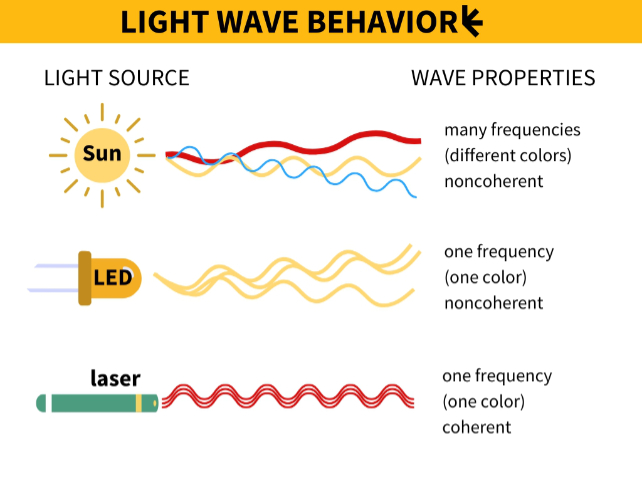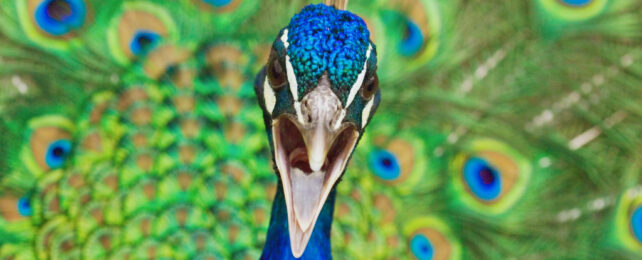Sharks with frickin' lasers are tired news. Peacocks, apparently, are where it's truly at.
Famous for their dazzling iridescence, peacock feathers are known to contain nanostructures that scatter light in ways that make their plumage shimmer in hues of blue and green.
Applying a special dye to multiple areas on a peacock's tail, researchers from Florida Polytechnic University and Youngstown State University in the US went on the hunt for structures that may emit a very different signature glow.
In a mind-blowing first for the animal kingdom, they discovered the eyespots on the fowl's fabulous feathers have unique properties that align light waves by bouncing them back and forth, effectively turning them into yellow-green lasers.
Related: Your Brain Emits a Secret Light That Scientists Are Trying to Read
The word laser itself is an acronym for Light Amplification by Stimulated Emission of Radiation. Shine a light on atoms in certain materials, such as certain dyes or crystals, and they'll collectively excite one another into releasing a flood of photons.
This kind of light amplification isn't rare in nature, attracting the attention of researchers who are interested in developing biological lasers.
To become a bona fide laser beam, however, the buildup of stimulated waves must be neatly aligned so their phases march in step. One way to achieve this is to reflect the waves back and forth in a confined space known as an optical cavity.

The researchers found evidence of optical cavities in the form of resonating nanostructures in different parts of the eyespot, all faintly emitting two different wavelengths: green and yellow/orange.
Exactly what kind of structure is responsible for aligning the amplified light at these colors isn't clear. But the fact they are found across the feather, all emitting the same precise wavelengths in a signature fashion, is a sign that something strange is at work.
Identifying the physical properties of these resonators could lead to advances in laser technology, or provide biologists with a new tool for analyzing living materials.
As for the peacocks, we can only guess why evolution built lasers into their stunningly iridescent plumage.
Given how biologists are quickly coming to terms with the way animals fluoresce and shine in patterns and colors beyond our perception, it may be for displays that other peacocks are well adapted to see.
Perhaps sharks with lasers aren't such a terrible idea after all.
This research was published in Scientific Reports.
